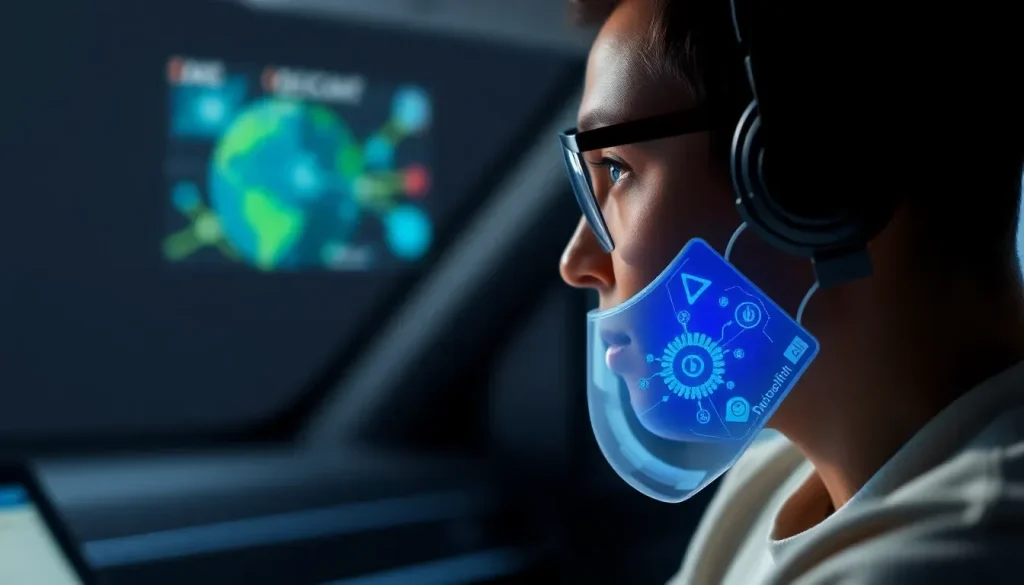Microsoft introduces Copilot for seamless AI interactions

Microsoft is taking a significant step forward in humanizing artificial intelligence interactions with the introduction of new avatars for its Copilot service. This innovative feature aims to enhance user experiences by making conversations with AI feel more natural and engaging. With the addition of over 40 stylized human avatars, users can now enjoy a more personalized interaction with their digital assistant.
The concept of using avatars in AI interactions is not merely a cosmetic upgrade; it represents a shift in how users connect with technology. By incorporating visual elements that reflect human characteristics, Microsoft hopes to diminish the barriers that often accompany technology adoption. Let's explore this fascinating development in more detail.
- Microsoft Copilot: The New Face of AI Interaction
- Understanding the Technology Behind Copilot Portraits
- A Diverse Range of Avatars for Inclusive Interactions
- The Philosophy Behind Avatar Development
- Privacy and Safety Measures for AI Interactions
- Comparative Analysis: Copilot vs. Other AI Assistants
Microsoft Copilot: The New Face of AI Interaction
At the heart of this initiative is a new feature called "Portraits," which allows users to select from a variety of avatars during voice conversations with Copilot. These avatars are designed to express emotions and respond visually during interactions, enhancing the overall user experience. According to reports from The Verge, this new feature is part of a broader experiment within Copilot Labs aimed at creating a more seamless interaction between users and AI.
Mustafa Suleyman, Microsoft's AI director, highlighted the importance of this development, stating, "Now you can speak with a Copilot portrait in real time!" This feature is designed to cater to users who feel more at ease communicating with a visual representation of AI rather than a voice alone. By providing a face to the AI, Microsoft hopes to foster a more relatable connection.
Understanding the Technology Behind Copilot Portraits
The "Portraits" feature employs VASA-1, a cutting-edge technology developed by Microsoft Research that creates hyper-realistic avatars. This technology can generate lifelike faces that speak based on audio input and a still image. Key aspects of VASA-1 include:
- Natural facial expressions that mimic human emotions.
- Head movements that contribute to a more dynamic interaction.
- Accurate lip-syncing that aligns with spoken words.
- Elimination of the need for complex 3D modeling.
By utilizing this technology, Microsoft aims to create a more human-like interaction without misleading users into thinking they are speaking to a sentient being.
A Diverse Range of Avatars for Inclusive Interactions
The selection of avatars in the Portraits catalog showcases diversity across various dimensions, including race, gender, and age. Microsoft intentionally avoided a single style of representation, offering both 2D and 3D avatars, ranging from stylized to more realistic designs. One notable avatar even resembles the grandmother from the Pixar film Coco, allowing fans of the movie to engage with a familiar character in a unique way.
This approach reflects Microsoft’s commitment to inclusivity and representation in AI. By providing a range of avatar options, they aim to ensure that users from different backgrounds feel represented and comfortable during their interactions.
The Philosophy Behind Avatar Development
Microsoft's strategy is not solely focused on creating visually appealing avatars. The company is also mindful of the ethical implications of AI that closely resembles human beings. Suleyman has expressed concerns regarding the potential consequences of developing AI systems that might lead users to perceive them as conscious entities. He emphasized that:
- Designing AI to mimic human behavior could lead to misconceptions about its nature.
- Users might mistakenly advocate for the rights and welfare of these AI systems.
- It is crucial to build AI that is beneficial and functional for people, rather than attempting to replicate human consciousness.
These insights underline the need for cautious development in the AI space, ensuring that technology serves humanity without crossing ethical boundaries.
Privacy and Safety Measures for AI Interactions
Given the sensitivity around AI interactions, Microsoft has implemented several safety features for the Portraits function. These measures include:
- Limiting access to adults in select countries to prevent potential misuse.
- Establishing daily session limits to manage interaction frequency.
- Providing visual indicators to remind users that they are interacting with AI.
Currently, the Portraits feature is being rolled out in the United States, Canada, and the United Kingdom, with no confirmed plans for expansion to other regions. Microsoft prioritizes user safety and the integrity of AI interactions, aiming to minimize risks associated with avatar-based conversations.
Comparative Analysis: Copilot vs. Other AI Assistants
As Microsoft Copilot continues to evolve, many users may wonder how it stacks up against other AI platforms, such as ChatGPT. Here’s a brief overview of some key differences and similarities:
| Feature | Microsoft Copilot | ChatGPT |
|---|---|---|
| Avatar Representation | Offers stylized human avatars | No visual representation |
| Real-time Voice Interaction | Yes, with animated avatars | Text-based interaction only |
| Diversity of Avatars | Wide range of options | N/A |
| Focus on Human-like Interaction | Yes, emphasizes relatability | Primarily text-focused |
This comparison showcases how Microsoft is innovating in the realm of AI by prioritizing a more engaging user experience through visual interactions, setting itself apart in a competitive market.
For those interested in learning more about this exciting AI development, Microsoft has produced a video showcasing how users can interact with Copilot. You can watch it here:
In summary, Microsoft Copilot's introduction of avatars marks a significant advancement in AI design and user interaction, reflecting the company’s commitment to an ethical, inclusive, and engaging technological landscape.




Leave a Reply